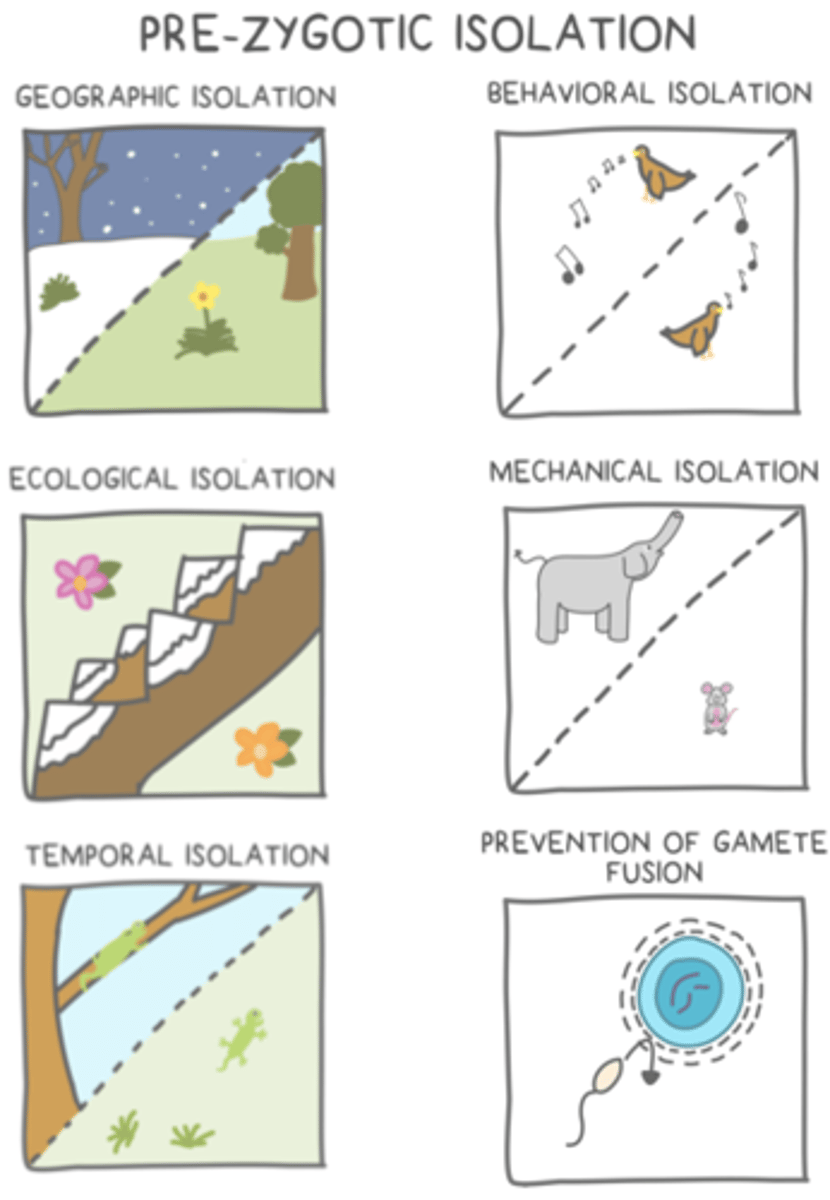Bootcamp.com - Evolution
1/139
There's no tags or description
Looks like no tags are added yet.
Name | Mastery | Learn | Test | Matching | Spaced |
|---|
No study sessions yet.
140 Terms
_____ is the gradual development and change of heritable traits in a population over successive generations
evolution
evolution is a long process that brings about _____
biodiversity
what are the five lines of evidence for evolution?
fossils, biogeography, embryology, comparative anatomy, and biochemistry
what is the study of fossils?
paleontology
what are the two types of fossils?
actual remains; ichnofossils
what are ichnofossils, and what are some examples of them?
fossils of traces; footprints and nests
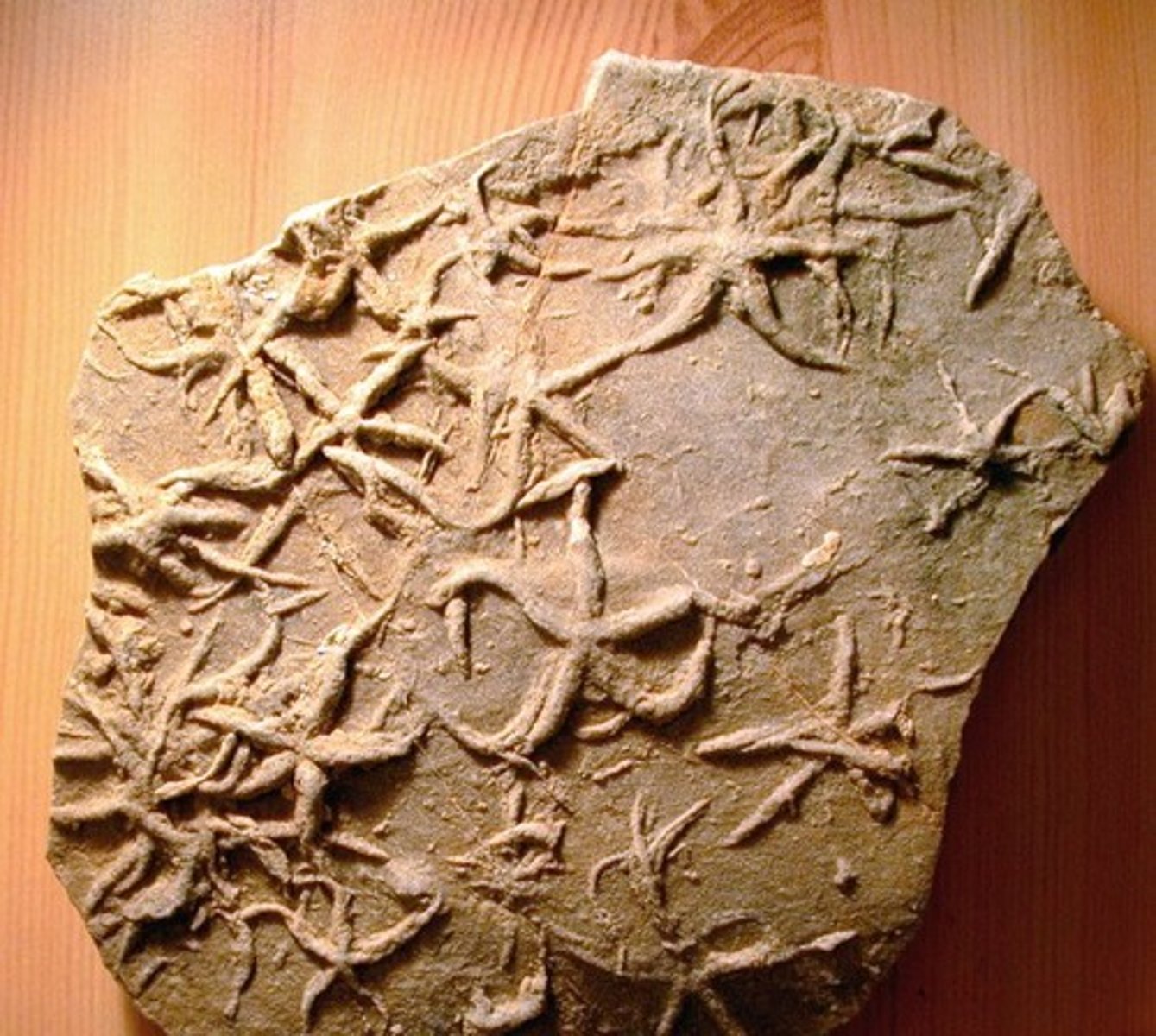
the process of a fleshy organism turning into solid rock is called _____
petrification
_____ explains the spread of different species throughout the world
biogeography
_____ are observed during the development stage in related organisms, which provides evidence for _____
embryological similarities; evolution
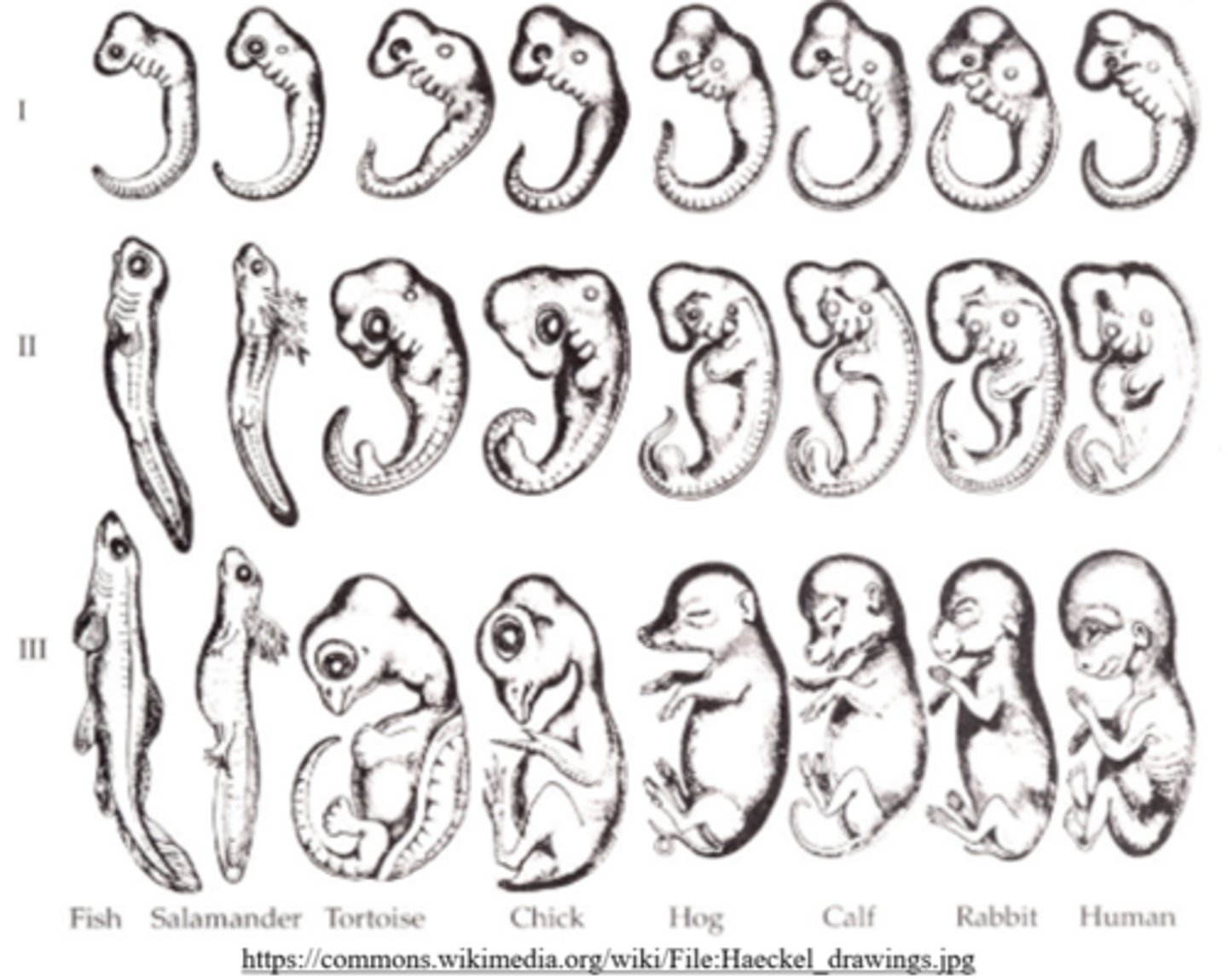
_____ compares different body parts from different animals to see possible connections between them
comparative anatomy

_____ structures may or may not perform the same function, but they are derived from a common ancestor
homologous

what is an example of homologous structures?
the forearm of a bird and the forearm of a human
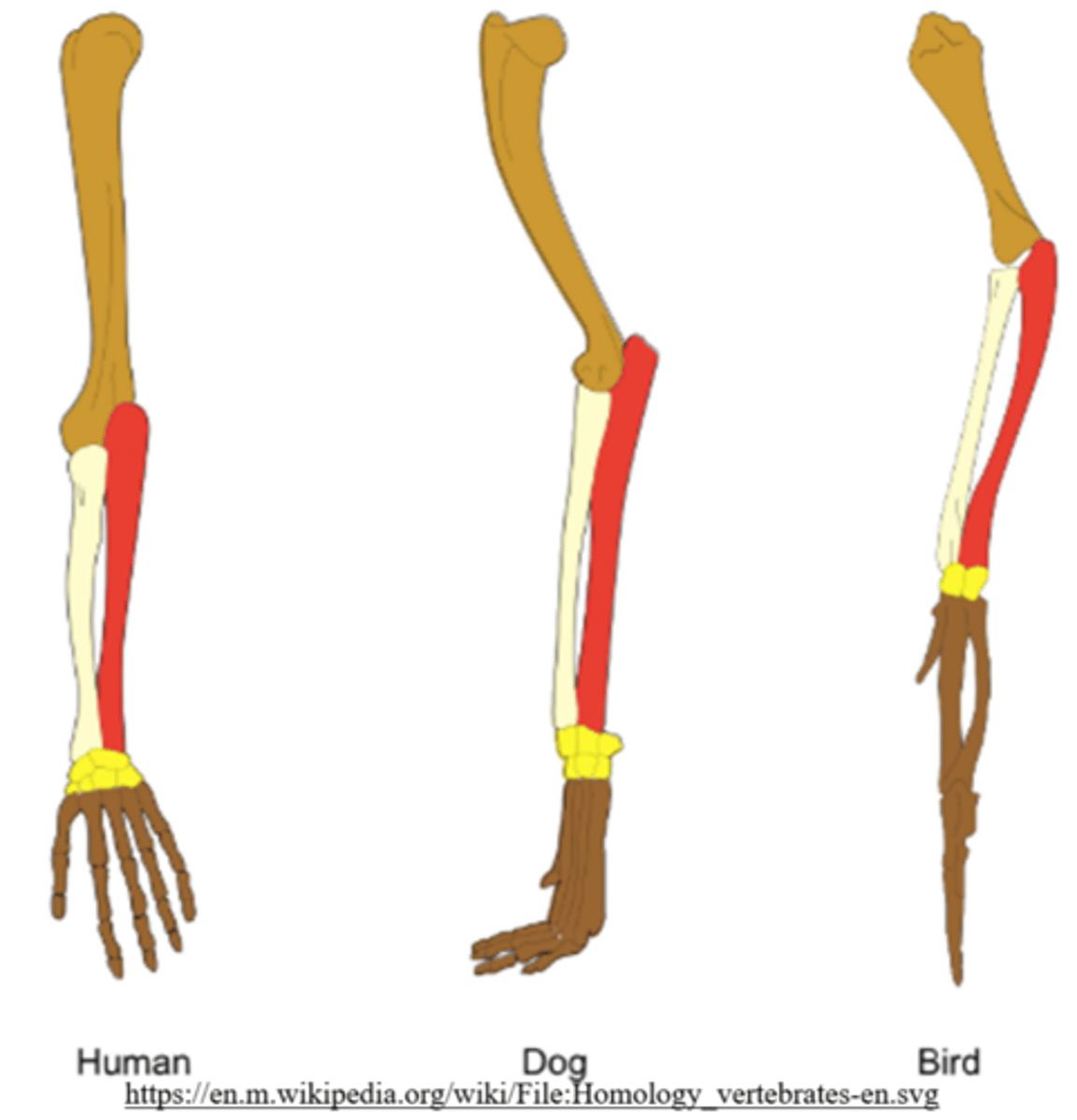
_____ structures have the same function, but they are not derived from a common ancestor
analogous

what are some examples of analogous structures?
shark fin v. penguin fin v. dolphin fin
_____ structures do not serve a purpose
vestigial
what are some examples of vestigial structures?
ostrich wings (can't fly), or the human appendix (can't digest cellulose like cows)
biochemical evidence of evolution comes from the comparison of conserved _____ & _____ in related species
DNA regions; metabolic pathways
name three important scientists that contributed to the theory of evolution:
Cuvier; Lamarck; Darwin
Cuvier proposed _____ as his evolutionary hypothesis, based on his observation of _____
catastrophism; fossil layers
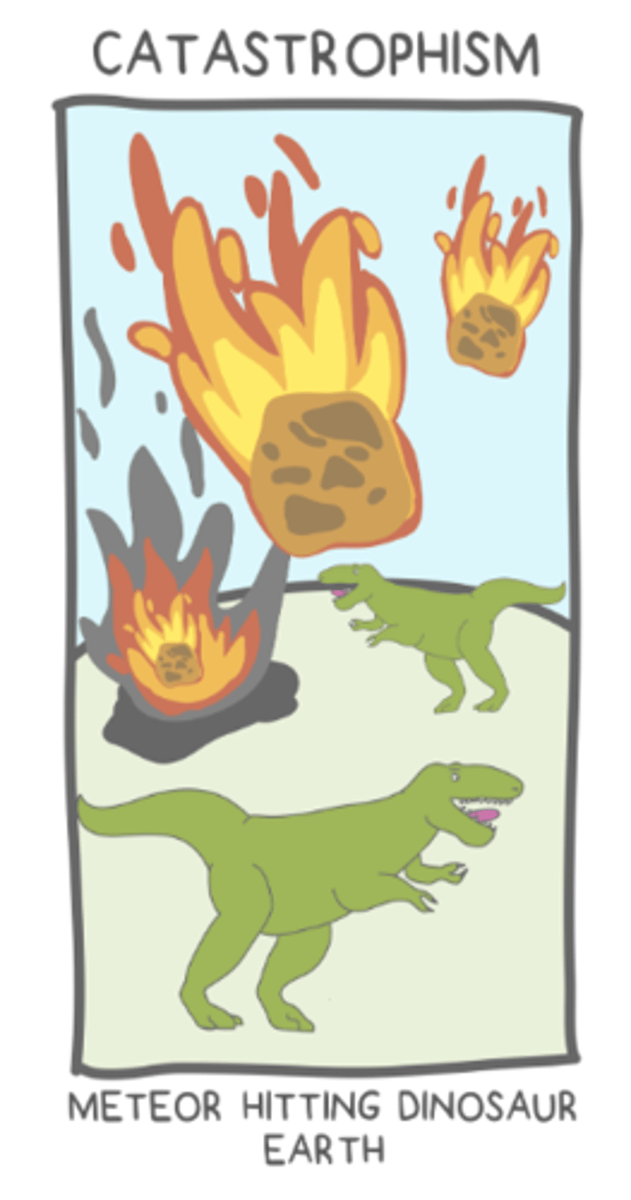
_____ says that sudden catastrophes caused mass extinctions, leading to landscape changes and evolutionary changes
catastrophism
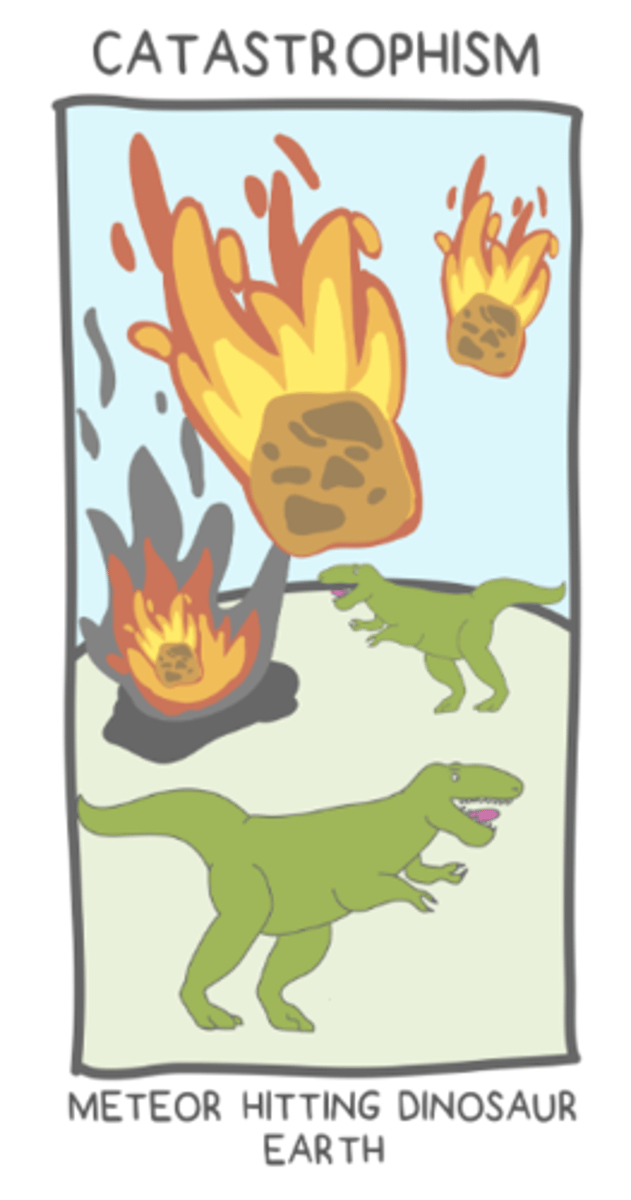
which two hypotheses did Lamarck propose for his belief of evolution?
the use/disuse hypothesis, and the inheritance of acquired traits hypothesis
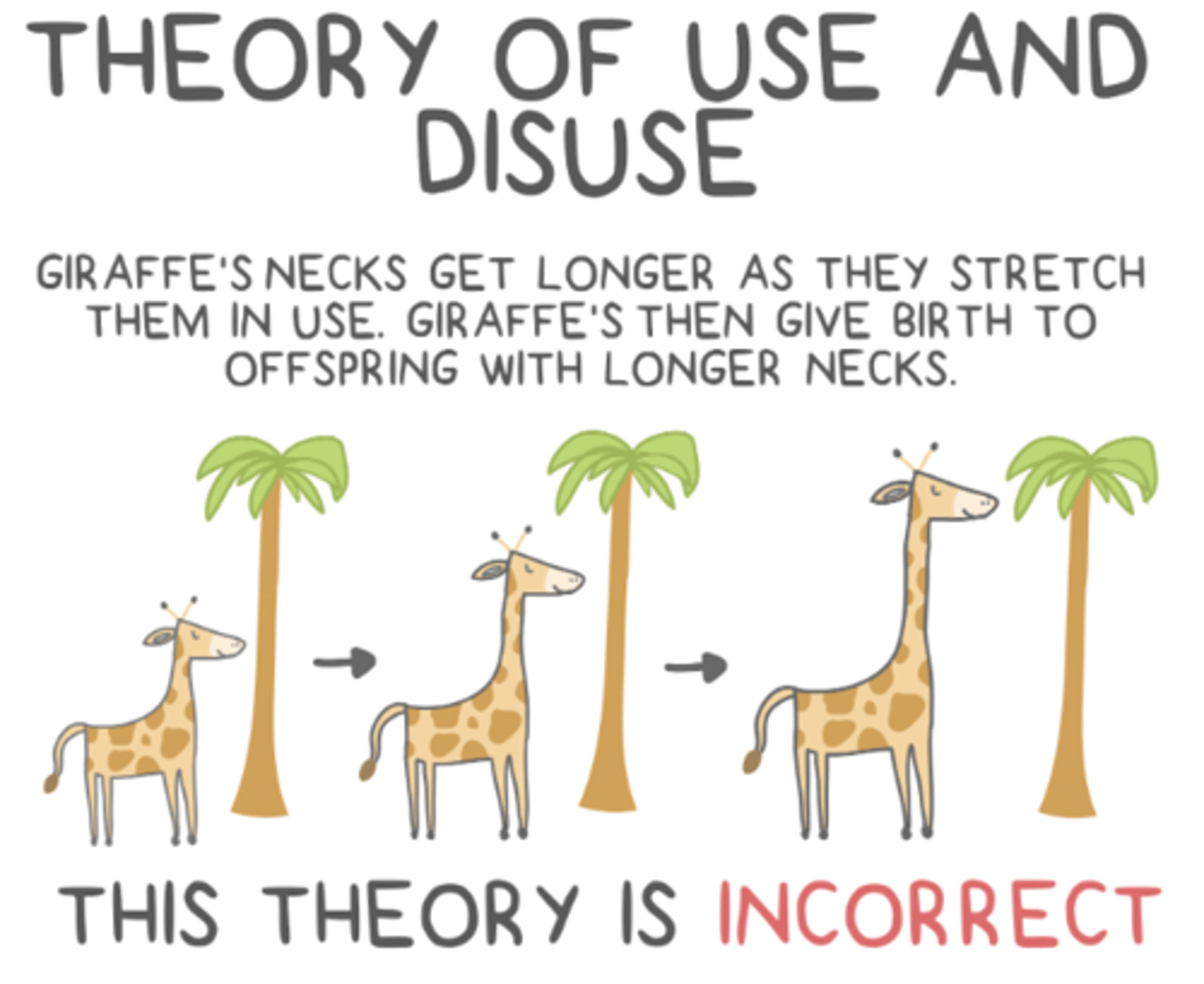
describe Lamarck's hypotheses, as well as how they fit together:
structures that are used will develop and pass to subsequent generations
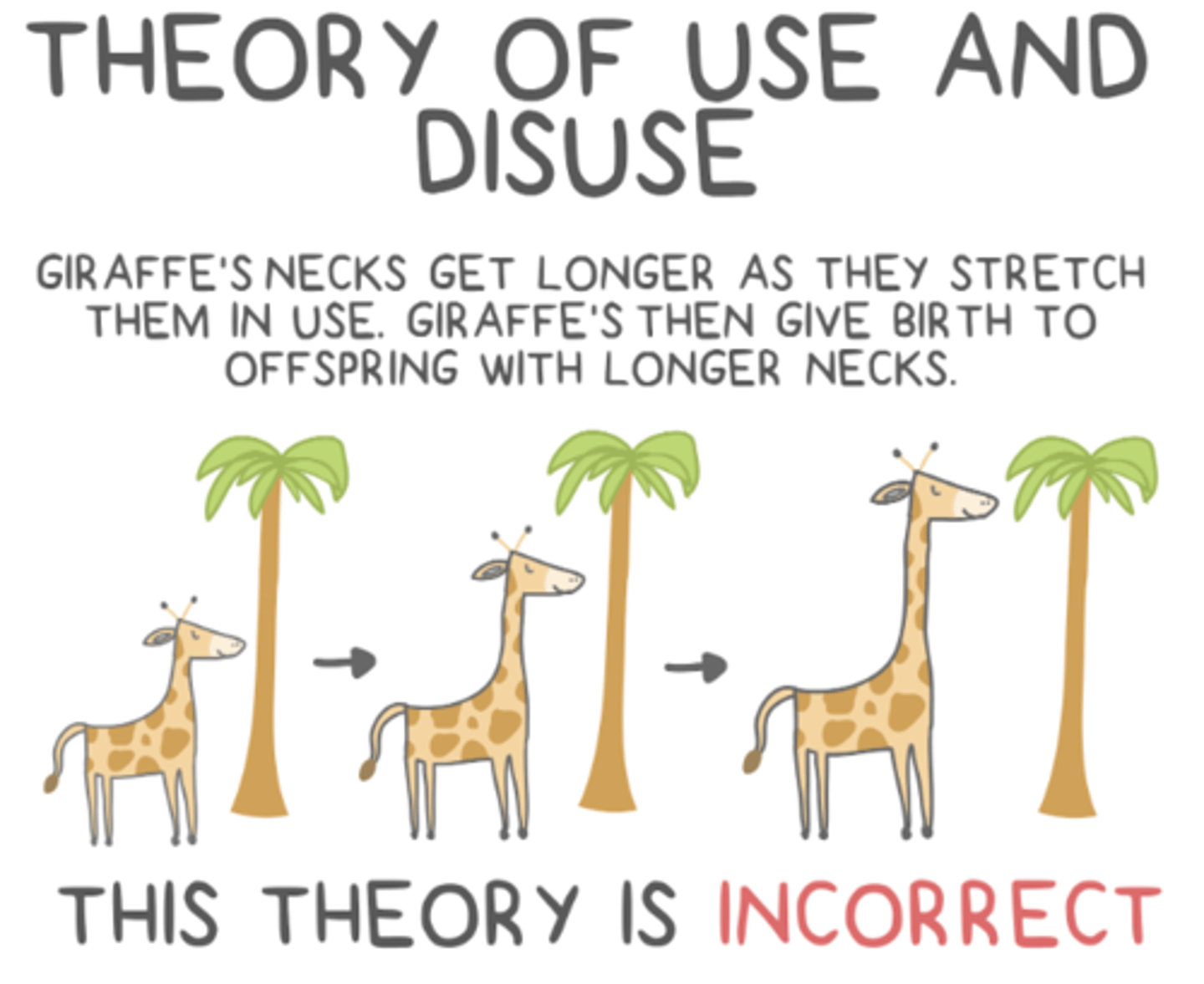
are Lamarck's hypotheses true?
no - environmentally acquired characteristics are not heritable from generation to generation
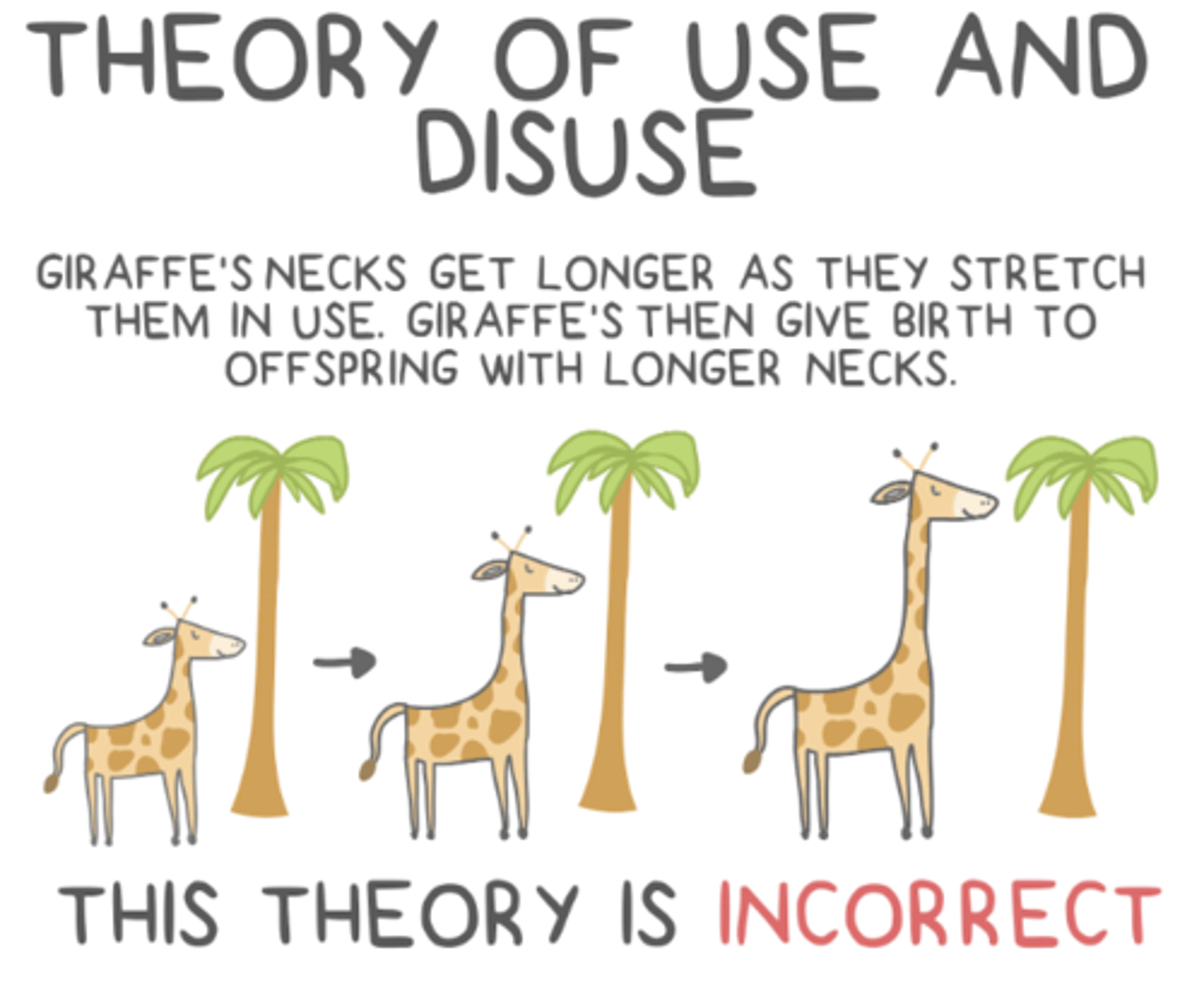
Darwin proposed the theory of _____
natural selection
(T/F) the theory of natural selection is correct and supports the theory of evolution
true
what is the main thing that evolution refers to?
heritable changes in allele frequencies in populations over time
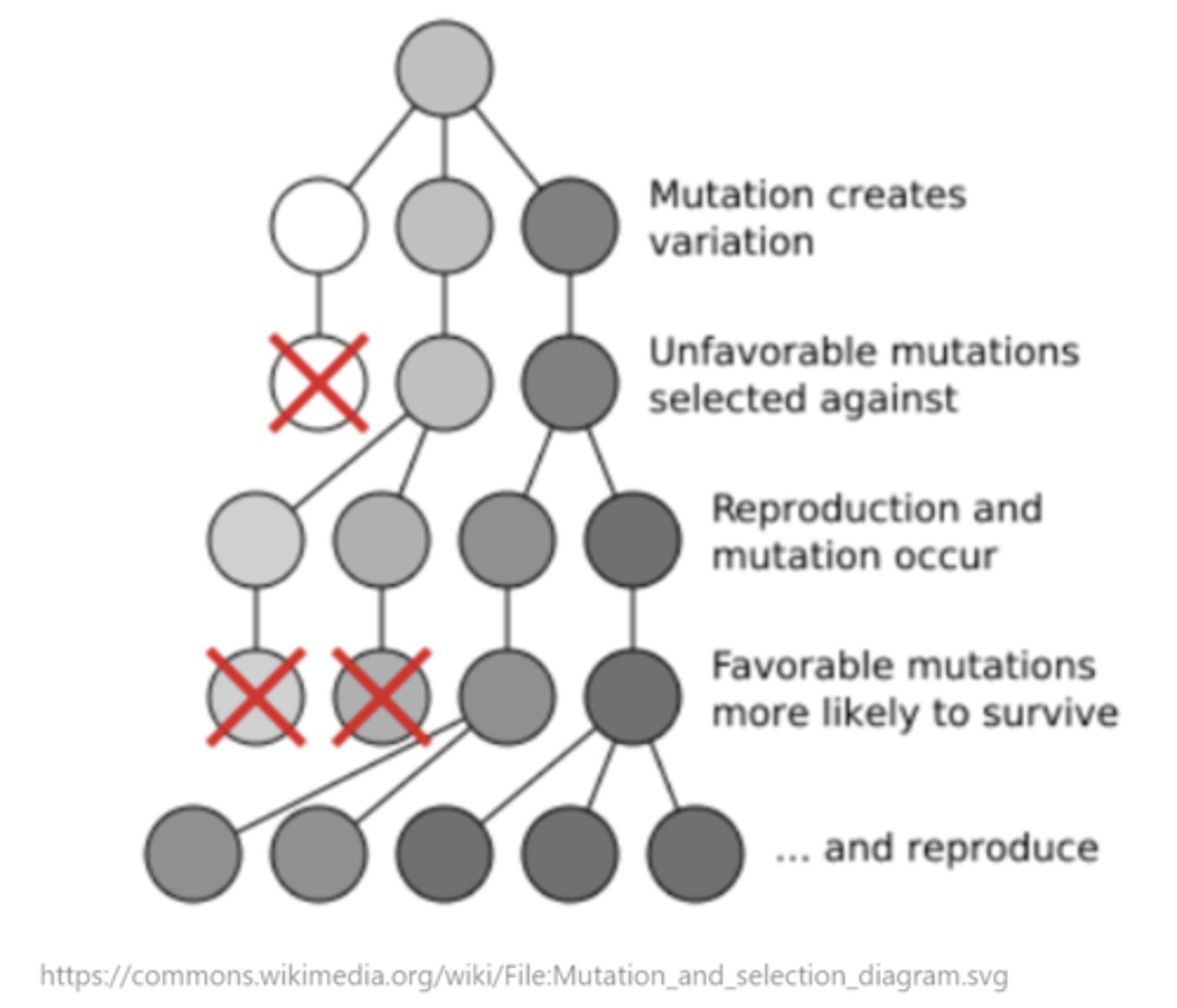
_____ is the gradual, non-random process where alleles become more or less common as a result of the individual's interaction with the environment
natural selection
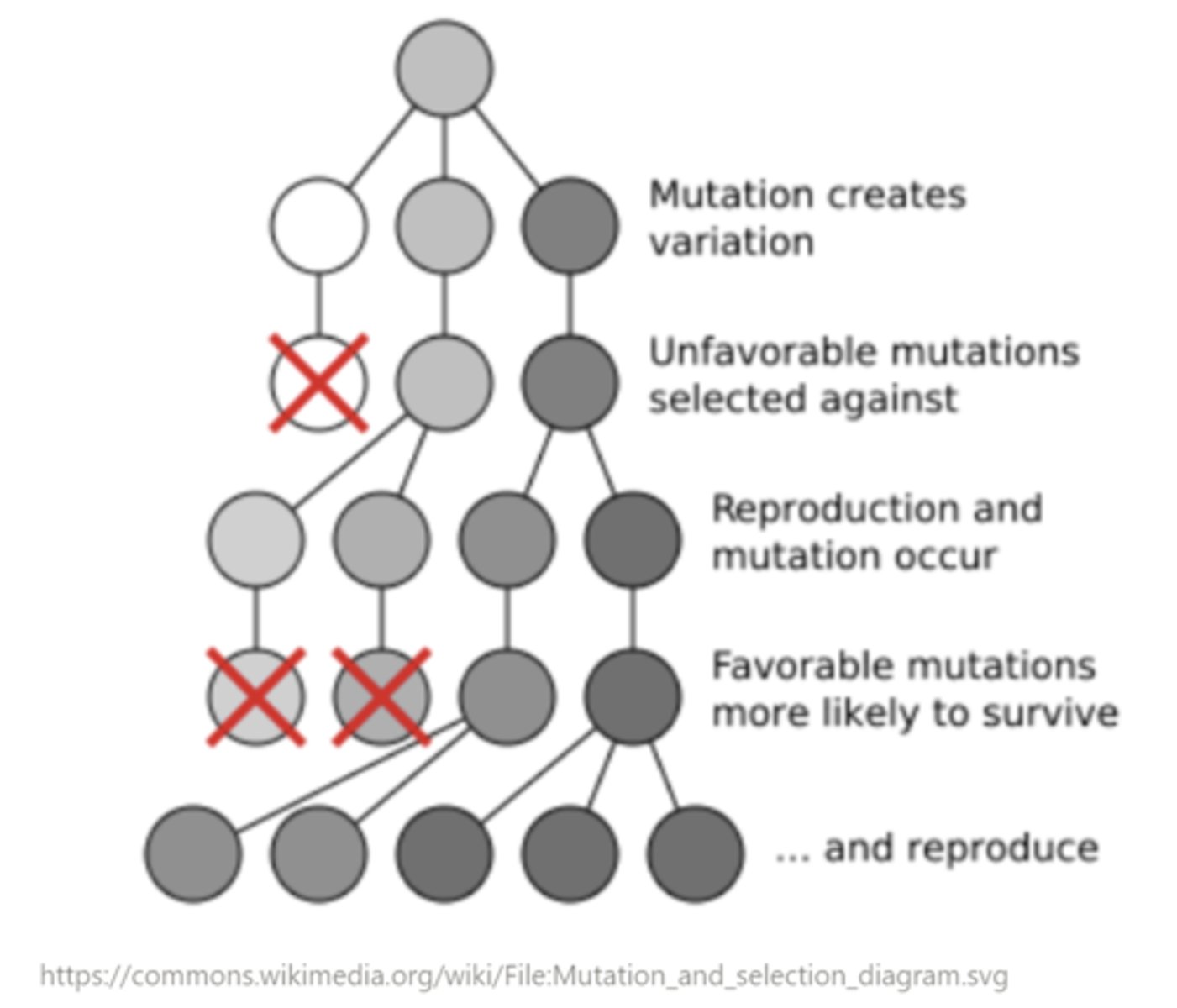
genetic variations that lead to different traits in organisms are _____ (random/nonrandom), but natural selection is _____ (random/nonrandom)
random; nonrandom
_____ (individuals/populations) evolve over the course of generations
populations
_____ describes an organism's ability to survive and produce viable and fertile offspring
fitness
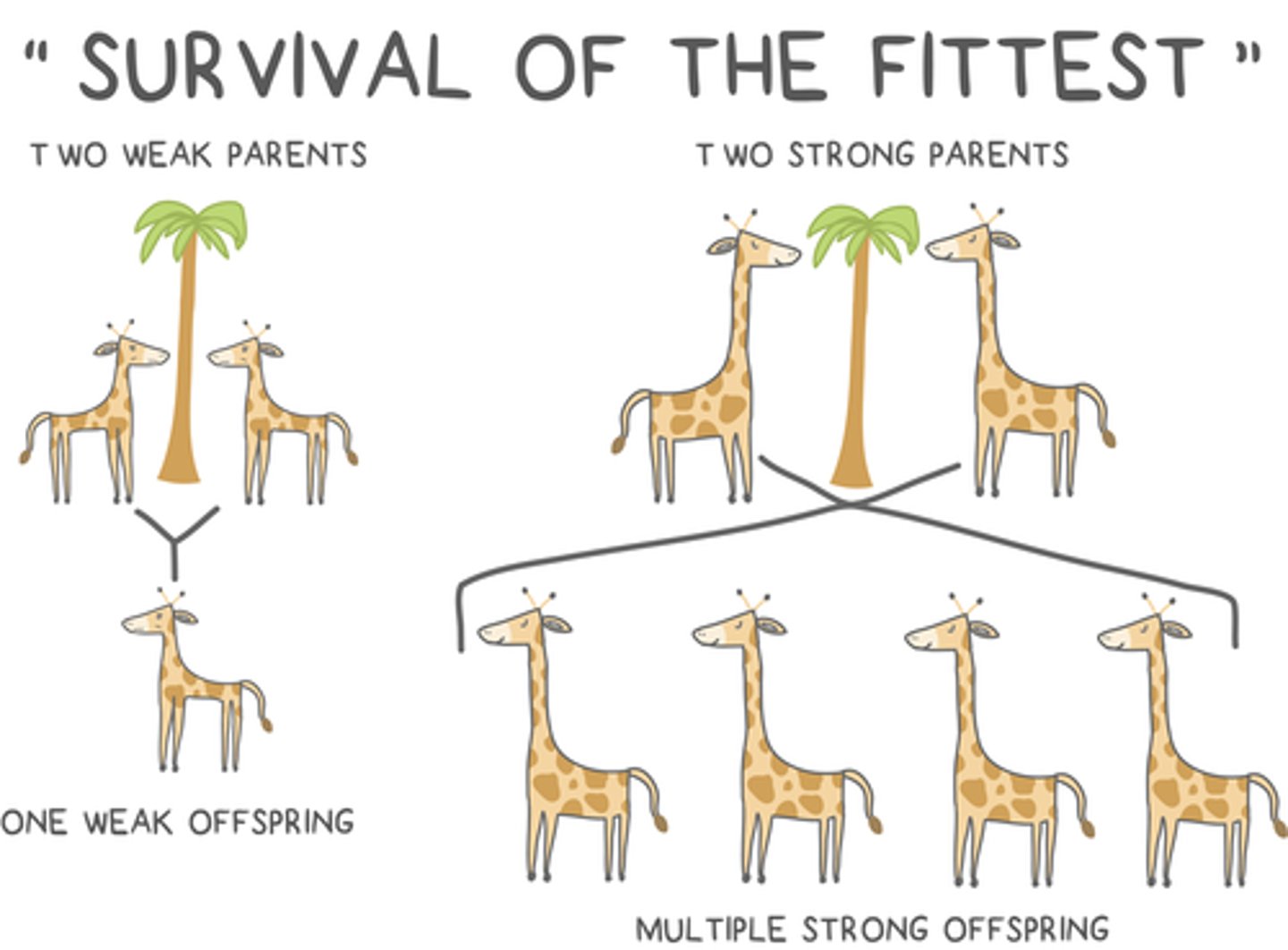
describe the general conditions for increasing an organism's fitness:
reproducing to create more viable and fertile offspring

what are the four requirements for natural selection to occur?
- the demand for a resource must exceed its supply
- there must be fitness differences between traits
- traits must be heritable
- the different traits in question must be significant to reproduction/survival

natural selection occurs on the basis that there is always an _____ supply to the growing demand, which leads to competition
insufficient
natural selection occurs on the basis that there is a difference in the ability of _____ to affect _____
heritable traits; fitness
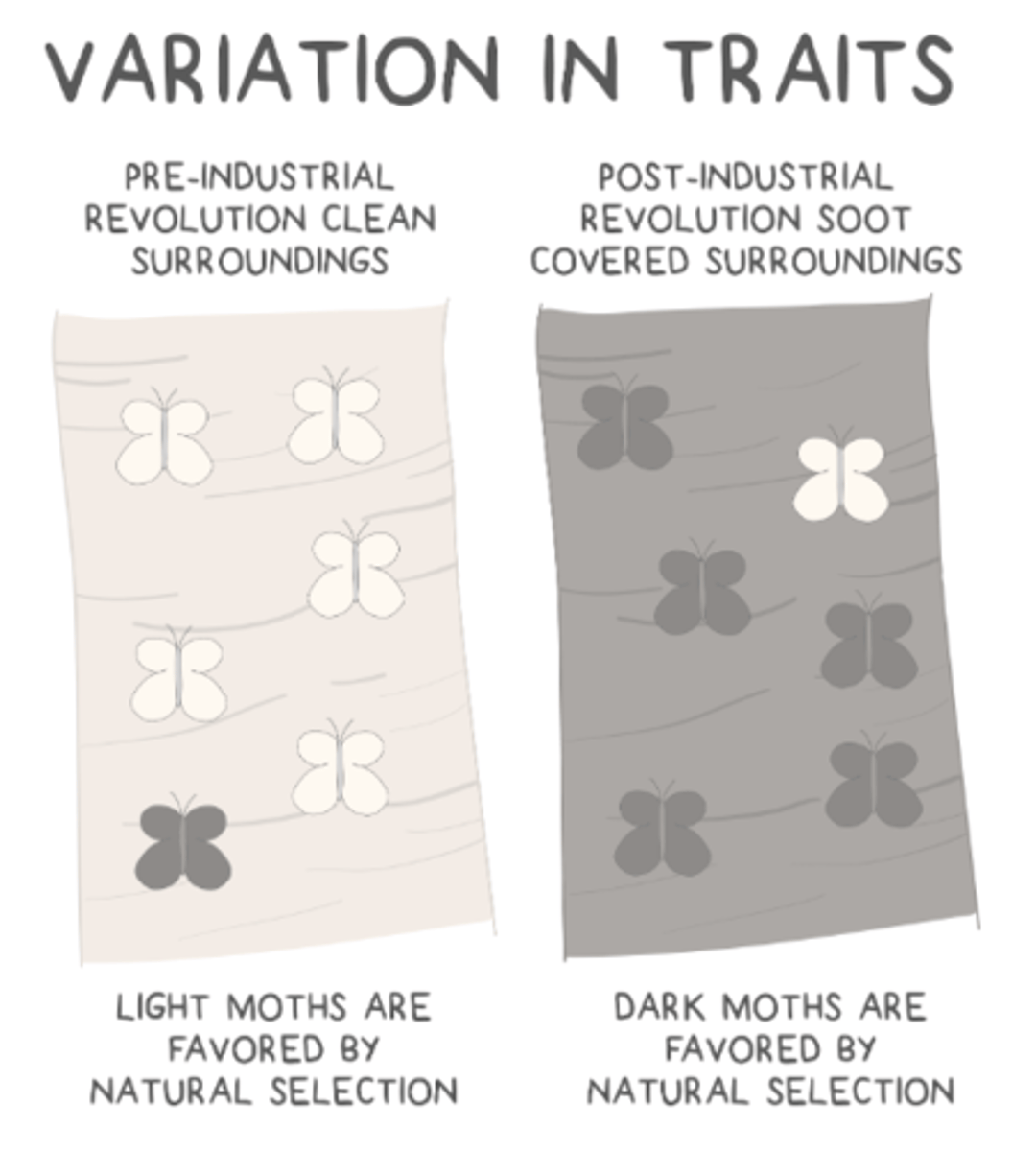
natural selection occurs on the basis that traits must be _____
heritable
natural selection occurs on the basis that trait variations are significant to _____ or _____
reproduction; survival
(would not affect fitness otherwise)
what are the three different types of natural selection?
stabilizing, directional, and disruptive
in stabilizing selection, the _____ trait is favored
mainstream

what is an example of stabilizing selection?
newborn weight (babies are roughly the same general weight)
in _____ selection, one extreme is favored
directional
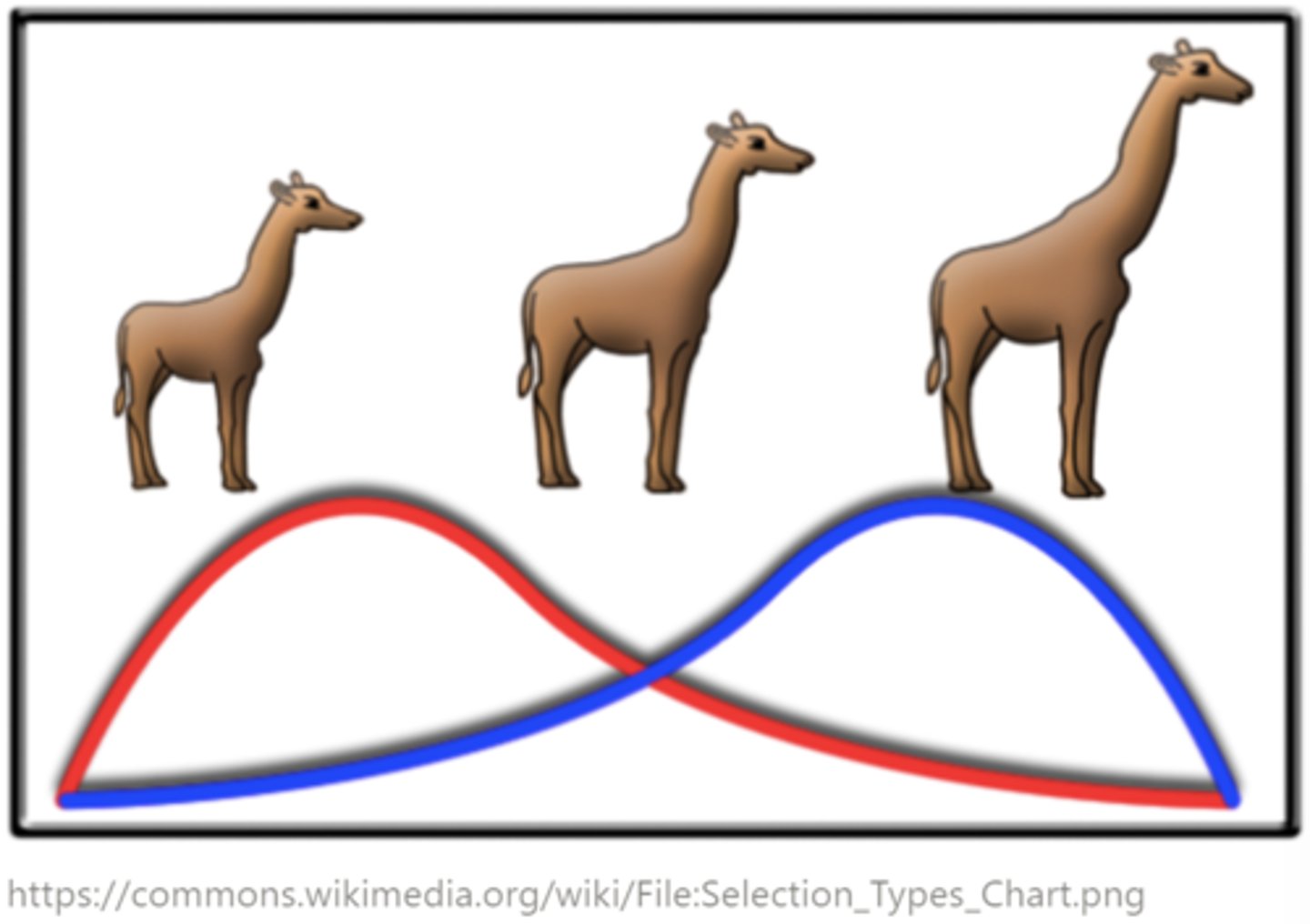
what is an example of directional selection for bacteria?
antibiotic resistance
in _____ selection, rare traits are favored over mainstream ones
disruptive (this is the opposite to stabilizing selection)
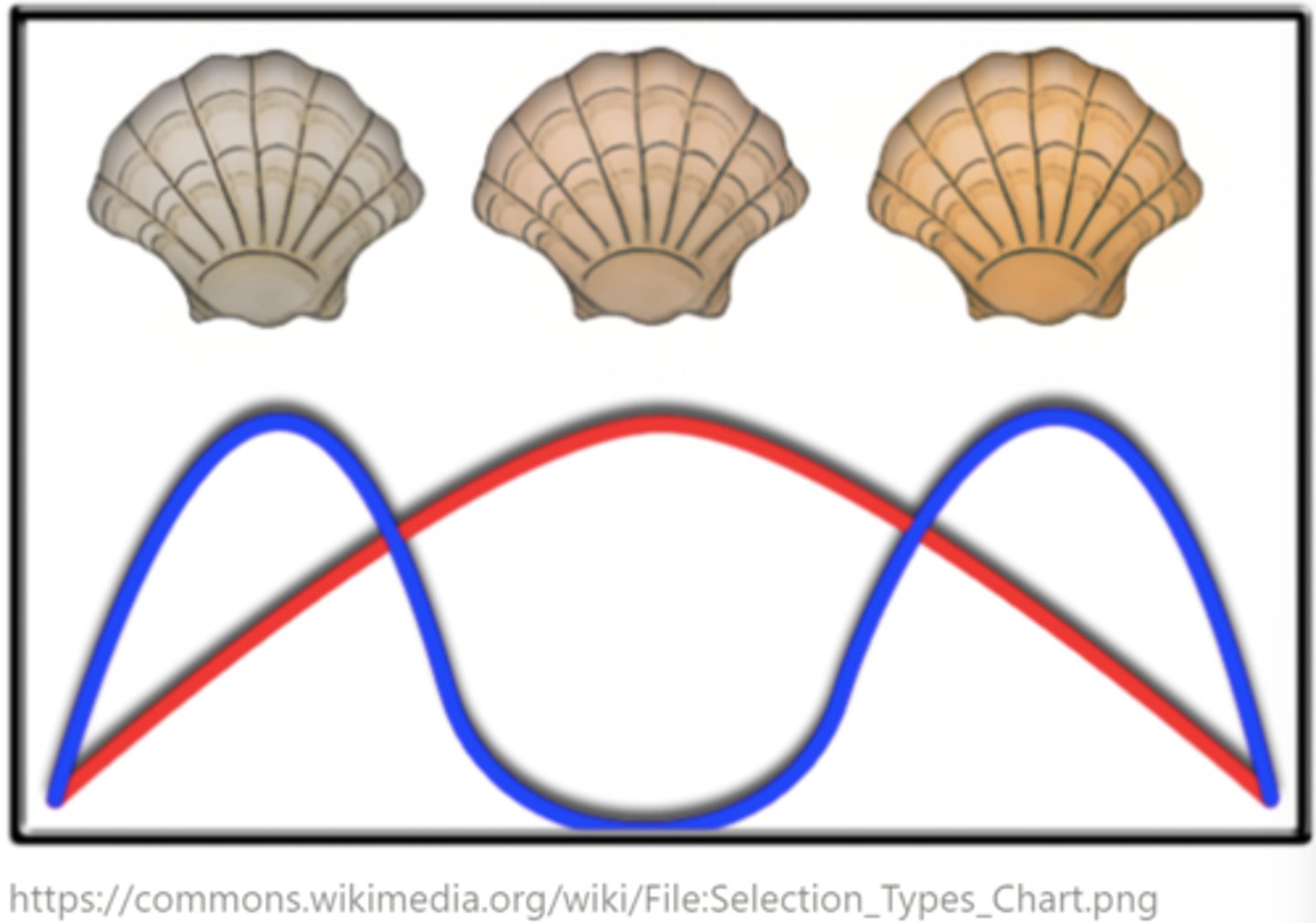
_____ occurs when there is differential, non-random mating between male and female
sexual selection

why do females boost the quality of their offspring?
they devote significant energy to reproduction
males boost the _____ of their offspring because they _____ of energy to mating
quantity; do not devote a lot
why is/isn't sexual selection a type of natural selection?
sexual selection is a special case of natural selection because the traits that make for a more attractive mate could also signal predators
artificial selection _____ (is/isn't) a type of natural selection
is not
artificial selection is usually carried out by humans when they breed for favorable traits - what are some examples?
dog breeds and agriculture (crops, cattle, etc.)
allele frequency is the same as _____ frequency
gene
_____ describes how often you can find a gene variant
allele frequency
_____ refers to the process when gene frequencies change within a population (from generation to generation)
microevolution
describe gene equilibrium:
there is no change in gene frequencies, meaning there is no evolution
what are the two Hardy-Weinberg formulae?
p + q = 1
p² + 2pq + q² = 1
what happens if only one of two Hardy-Weinberg equations holds true?
the population is not in Hardy-Weinberg equilibrium
what are the requirements for Hardy-Weinberg equilibrium?
Large populations; Random mating; no Mutation; no Natural selection; no Migration
Large Random M n' M (where n' = no)
Hardy-Weinberg equilibrium _____ (commonly/rarely) occurs in the real world
rarely
large populations minimize the effects of _____
genetic drift
(large populations are a requirement for Hardy-Weinberg equilibrium)
genetic drift is the random increase/decrease in _____
allele frequencies

_____ describes the phenomena where individuals do not seek a particular type of individual to mate with
random mating
(condition for Hardy-Weinberg equilibrium)
individuals that mate randomly do not mate only with _____ individuals or express _____ selection
nearby; sexual
random mating decreases the chances of a specific allele changing in frequency, so it is a condition for _____
Hardy-Weinberg equilibrium
there cannot be any mutations to introduce new alleles in the population in order for _____ to occur
Hardy-Weinberg equilibrium
in Hardy-Weinberg equilibrium, the environment is not impacting the allele frequencies, and all traits are neutral - in other words, no _____ occurs
natural selection
migration _____ (can/cannot) occur in Hardy-Weinberg equilibrium
cannot
(no gene flow - aka the population must be isolated)
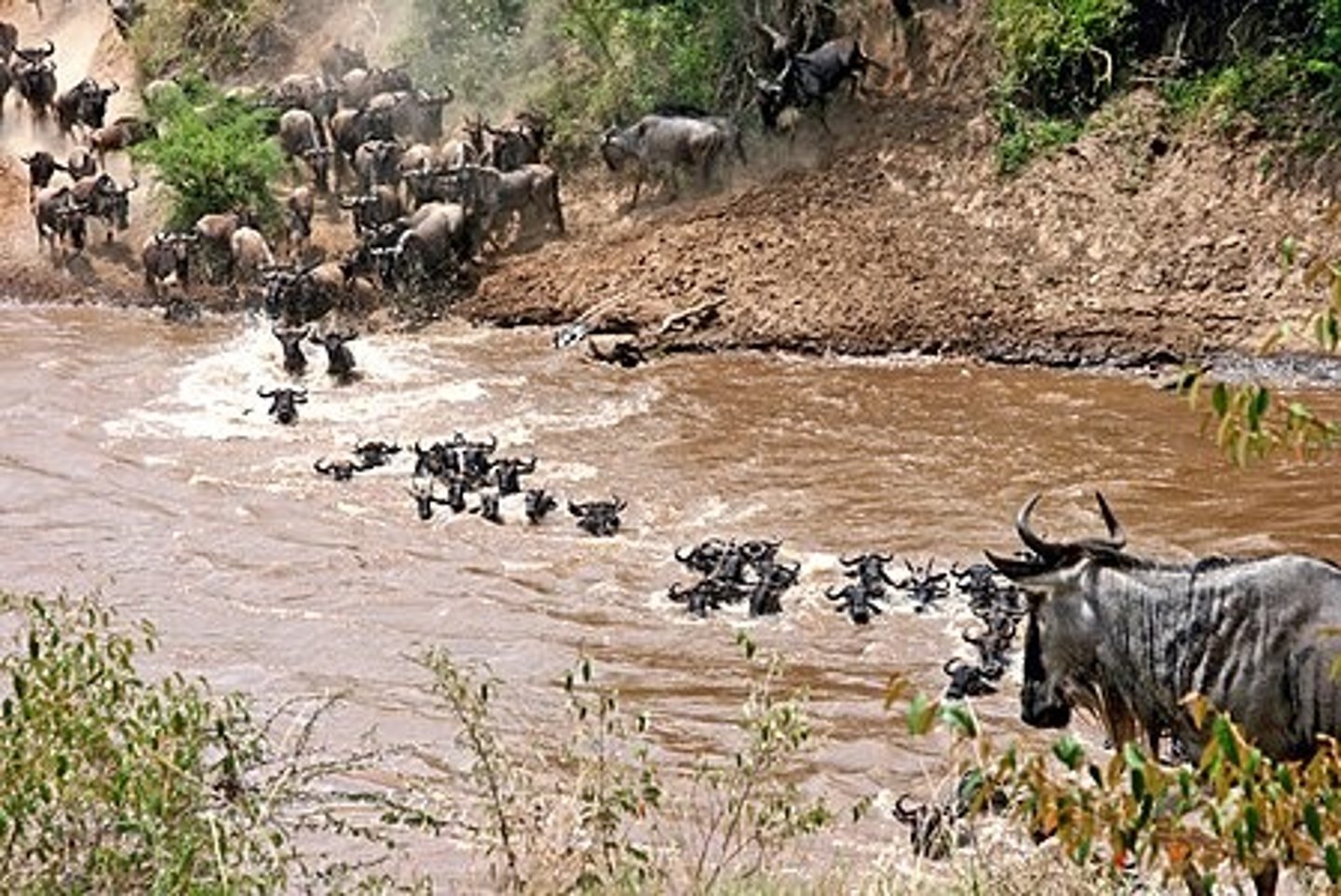
what are the four sources of genetic variation?
mutation, sexual reproduction, balanced polymorphism, and polyploidy
what are the three ways sexual reproduction creates genetic diversity?
crossing over, independent assortment, and random joining of gametes
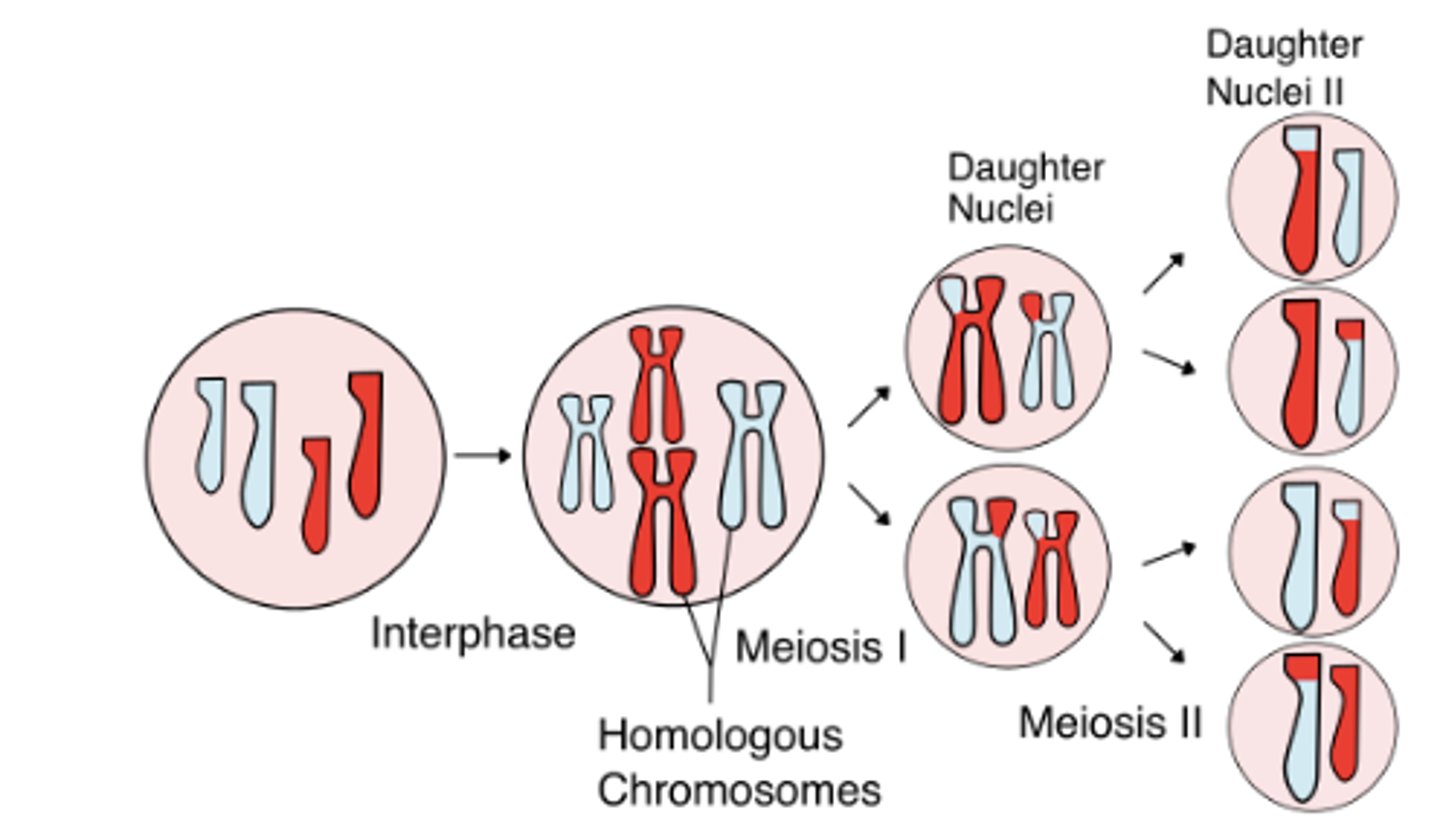
what is a balanced polymorphism?
the maintenance of different phenotypes in a population
what are the ways to maintain a balanced polymorphism?
heterozygote advantage, minority advantage, and neutral variations
how do certain heterozygous individuals create balanced polymorphisms?
they could be more fitted to the environment than homozygotes
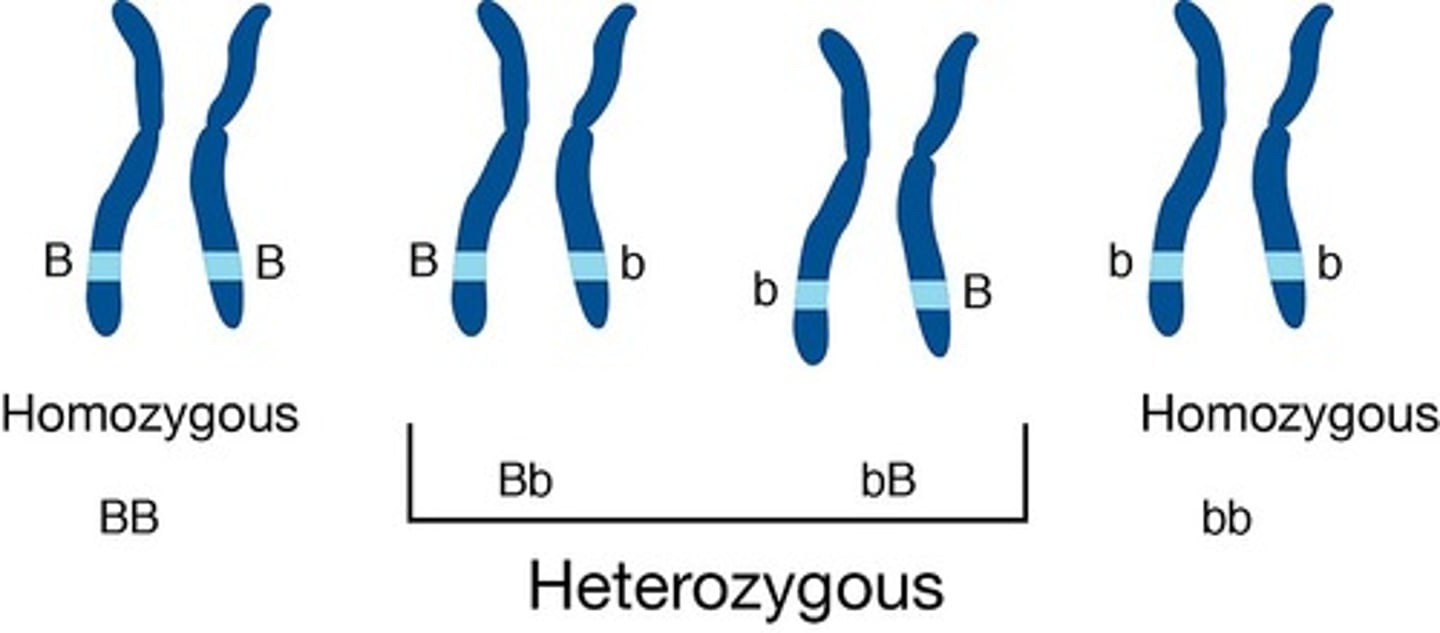
give a common example of a heterozygote advantage, which leads to a balanced polymorphism:
African sickle cell carriers (malaria protection)
- note that sickle cell carriers do not have sickle cell anemia
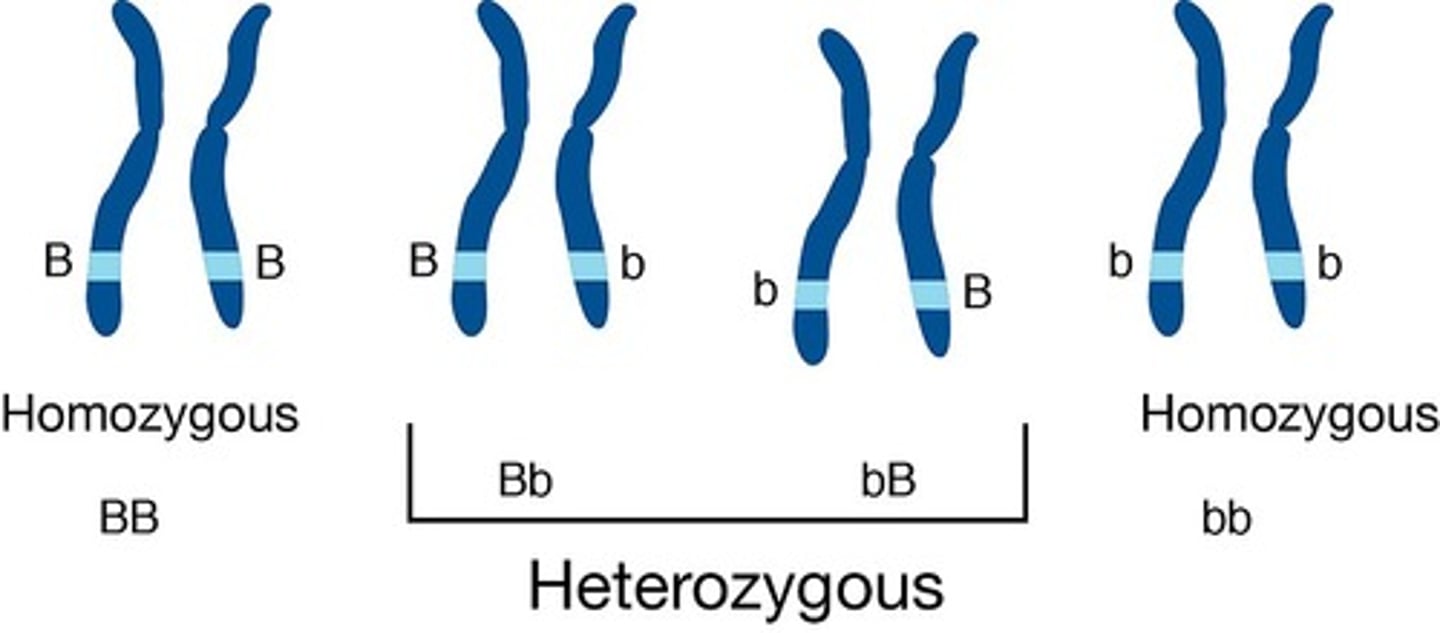
how do certain minority groups create balanced polymorphisms?
their rare phenotypes could offer higher fitness than the more common phenotypes
describe the mechanism of the minority advantage:
rare allele has high fitness --> rare allele becomes more common --> "rare" allele is no longer rare or advantageous --> evolution to new rare allele
minority phenotypes cycle between low and high _____ to balance a polymorphism
frequency
_____ can create balanced polymorphisms because there is not selective advantage/disadvantage; there is only increased variety
neutral variations
_____ contain multiple copies of chromosomes, and multiple alleles for each gene
polyploids
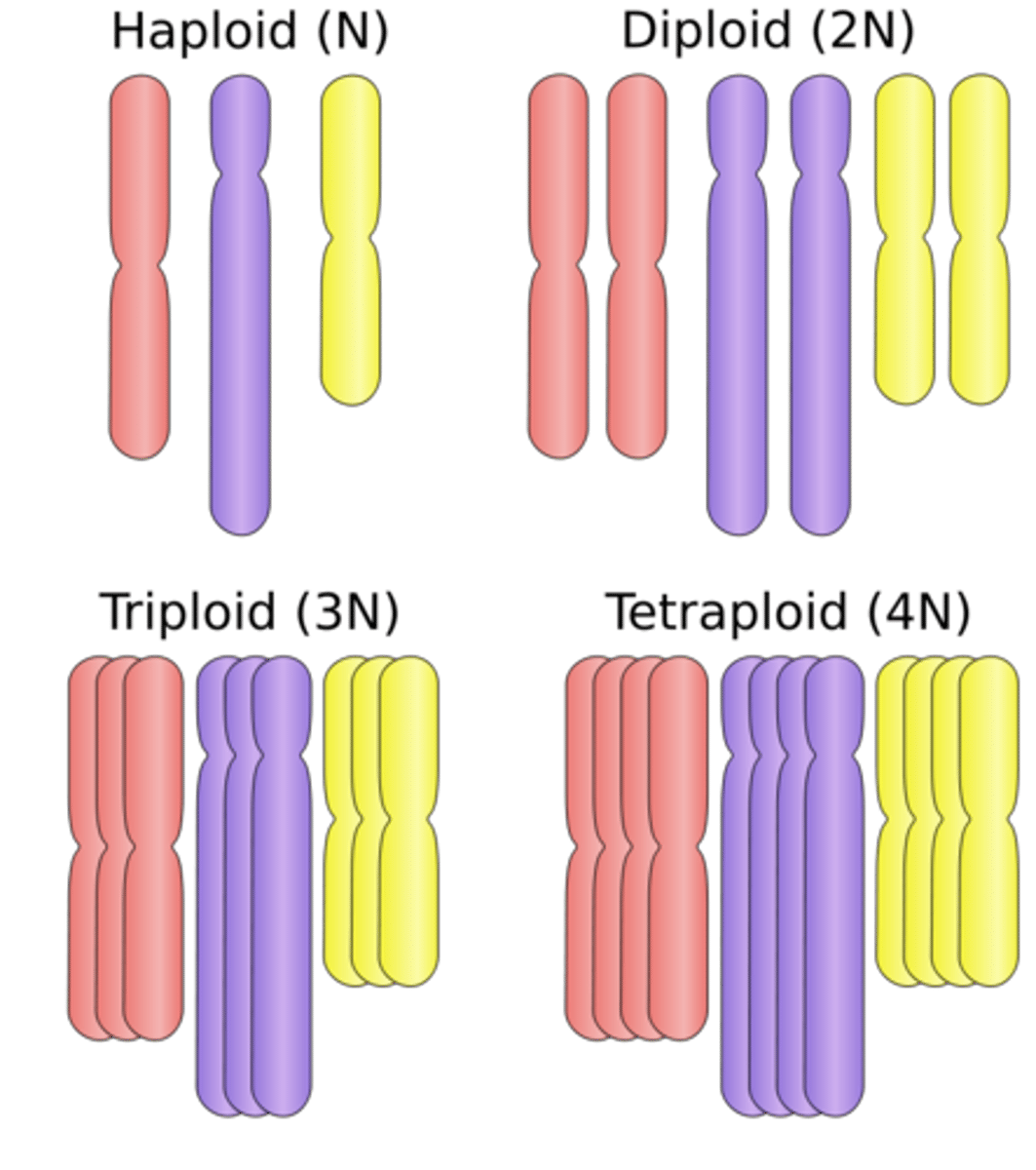
polyploids have a high _____ of traits, which leads to the maintenance of more _____ in the genome
variety; alleles
(never know when those traits/alleles may become favorable in the environment)

what are the five key factors that lead to microevolution?
genetic drift, nonrandom mating, mutations, natural selection, and gene flow
_____ is a random change in the allele frequencies of a gene pool
genetic drift

what size population is most affected by genetic drift?
small
(large populations tend to be protected from genetic drift)
the _____ occurs when there is a disaster that kills off most of the population, leaving only a handful of alleles
bottleneck effect
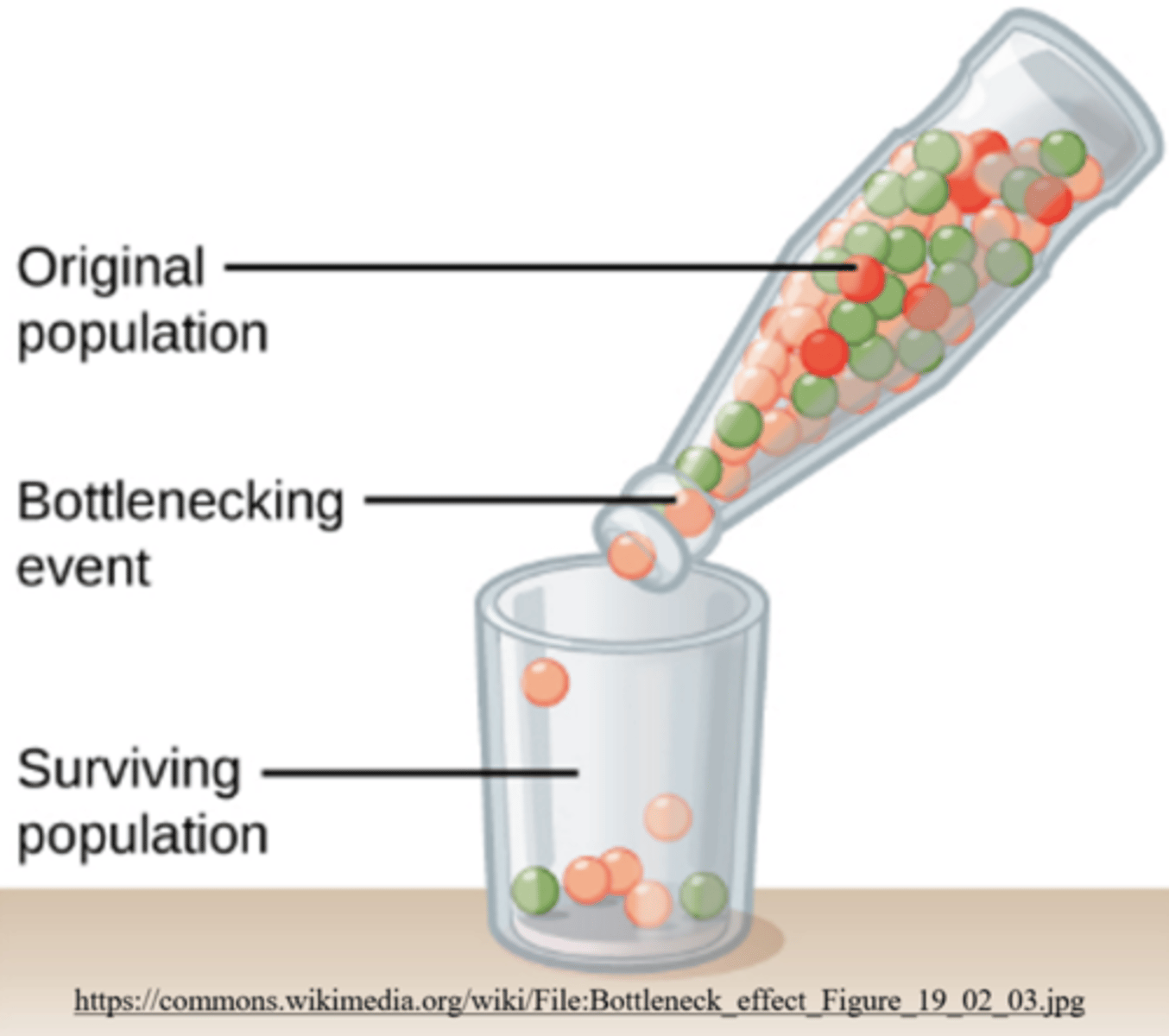
the bottleneck effect is a type of _____
genetic drift

describe the founder effect:
a small portion of a population migrates to a new location, altering the allele frequency of the ensuing population in that new location

the founder effect is a type of _____
genetic drift
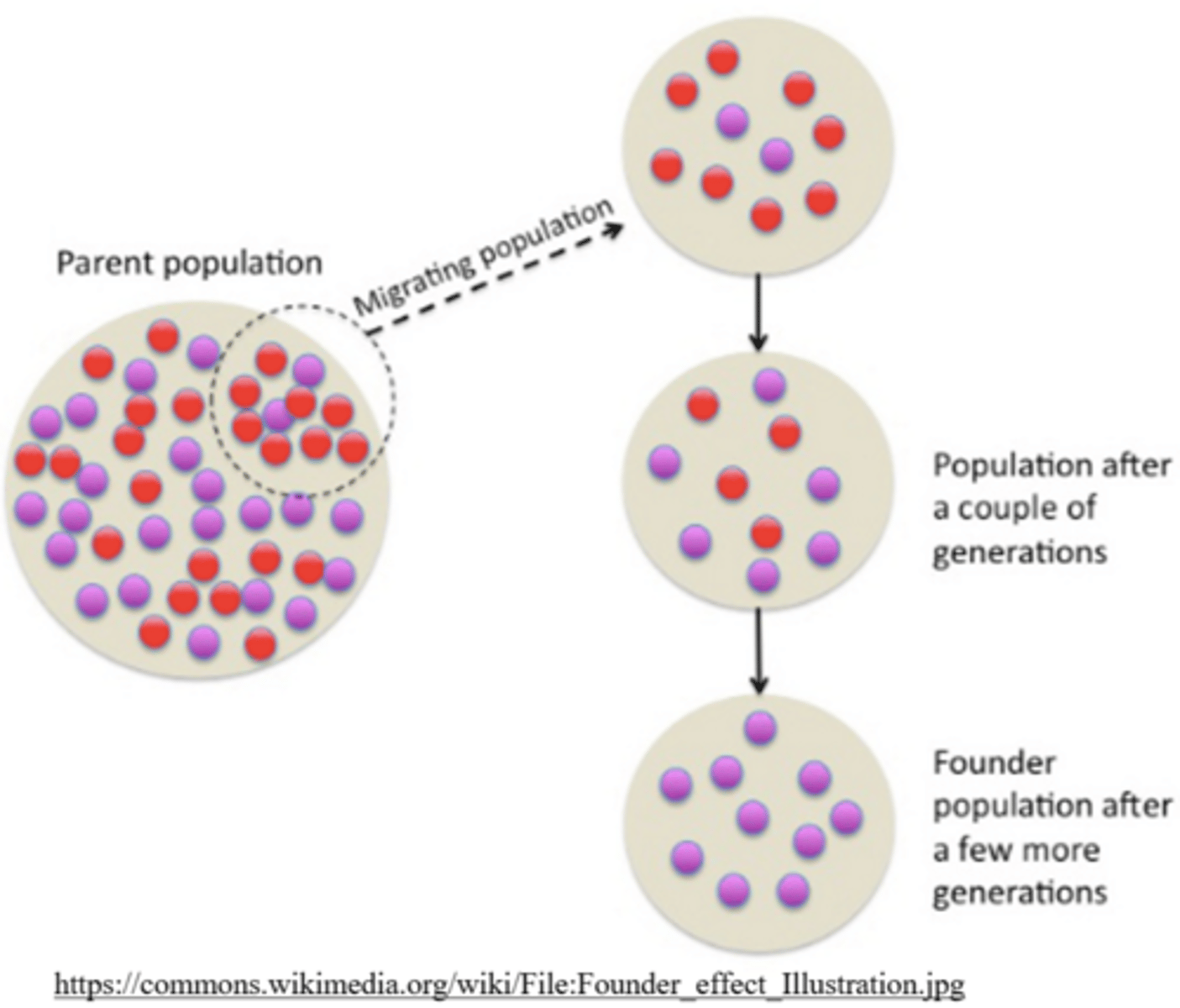
_____ describes the process where individuals with a low relatedness end up breeding
outbreeding
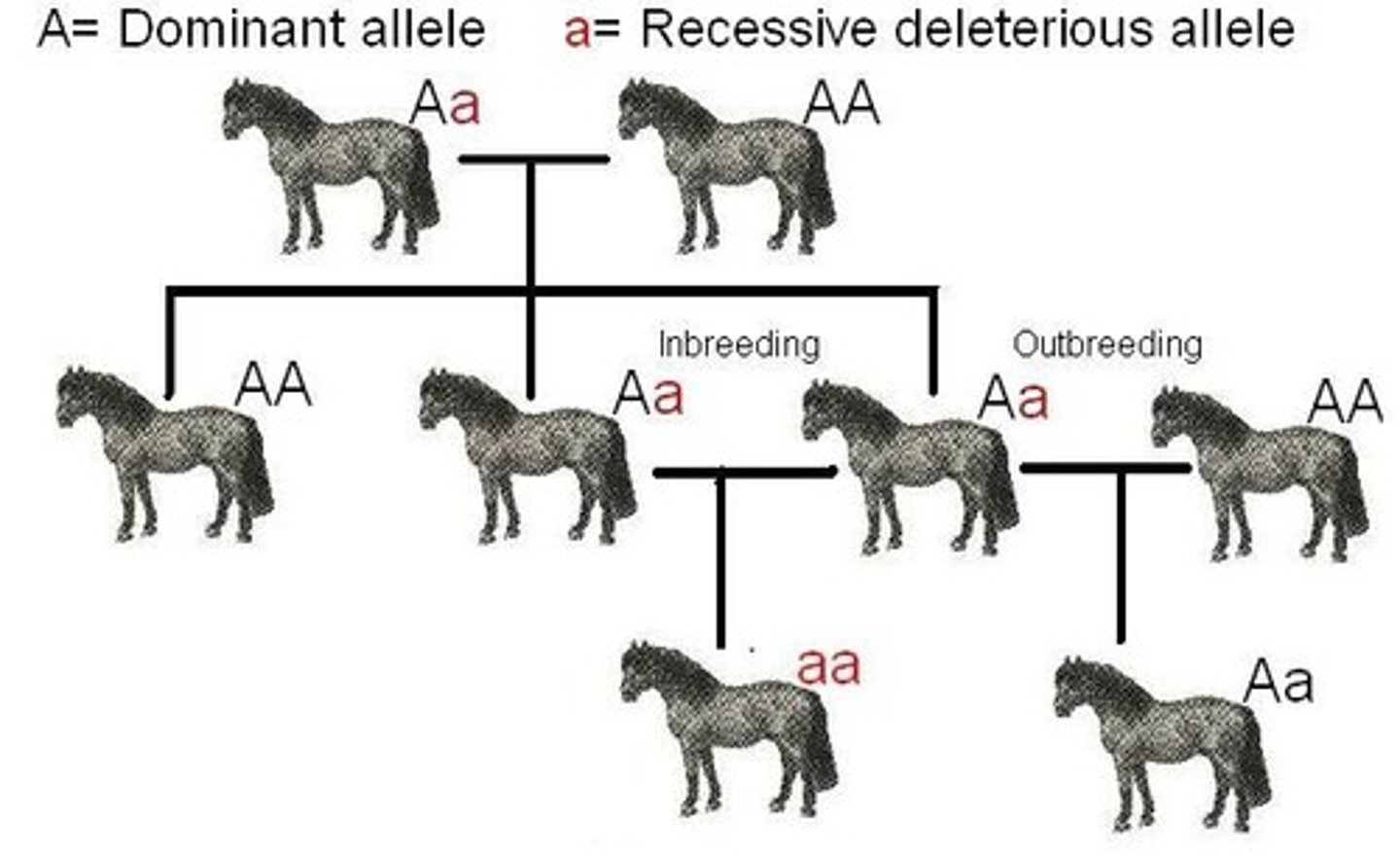
_____ describes the process where highly related individuals breed with each other
inbreeding
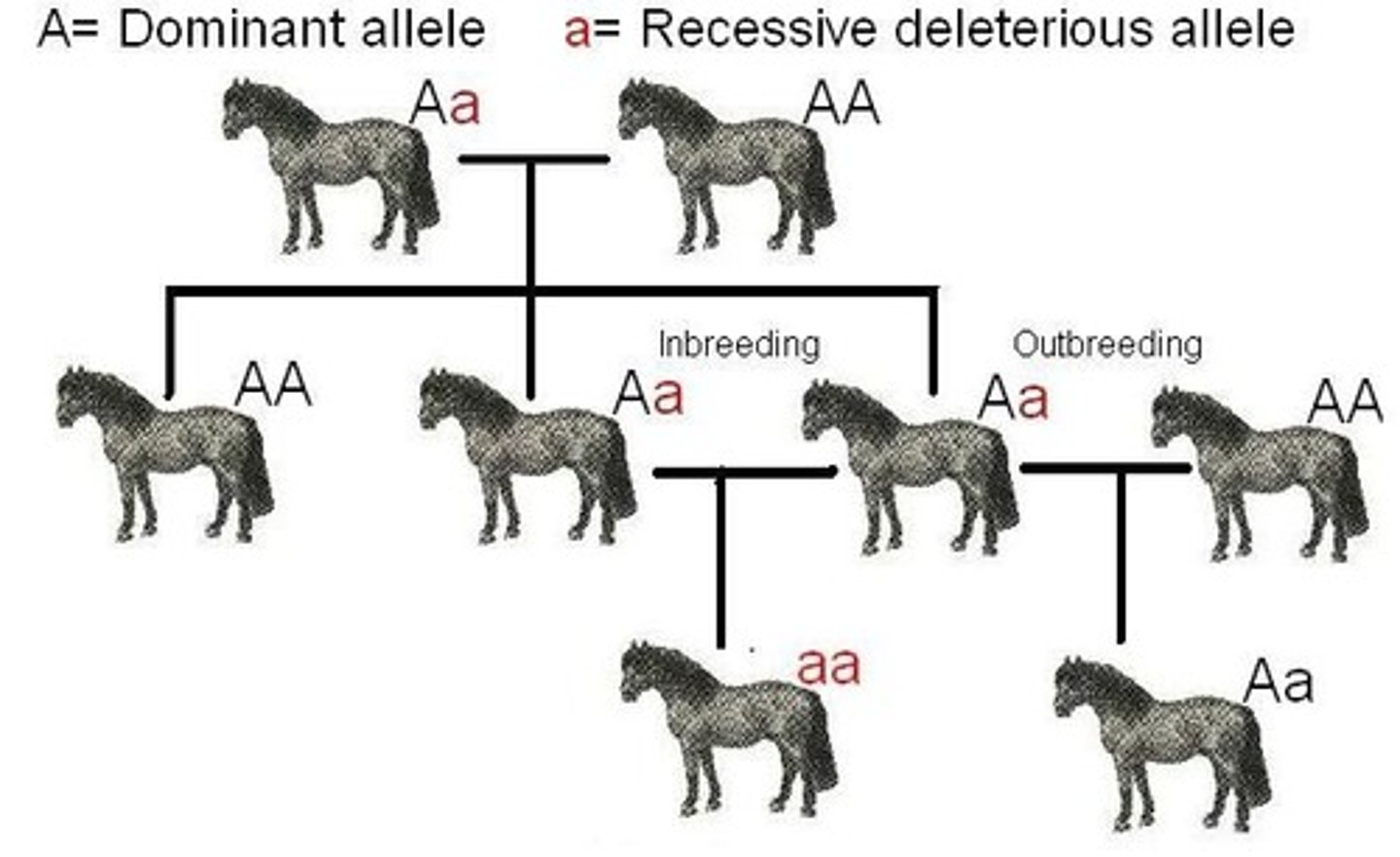
no luck is involved with _____, traits are selected based on how they confer fitness within an ecosystem
natural selection
_____ is the process of moving alleles between populations through migration
gene flow
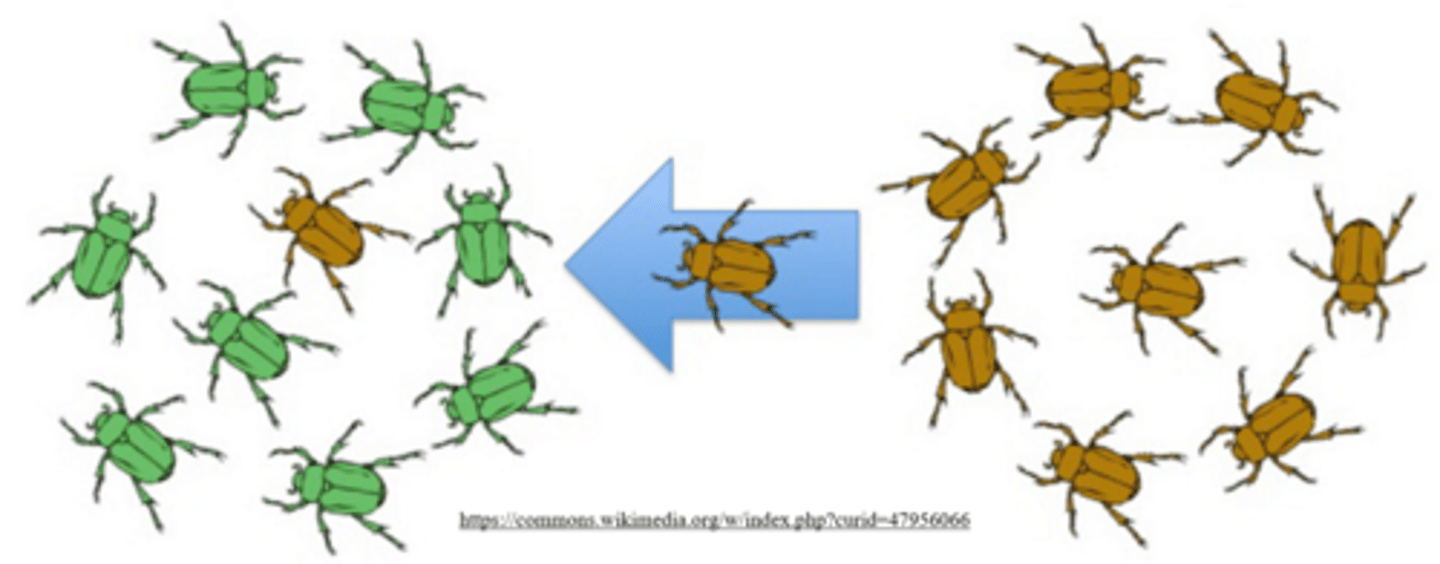
gene flow causes alleles to _____ and eventually make variations between populations _____
mix; smaller
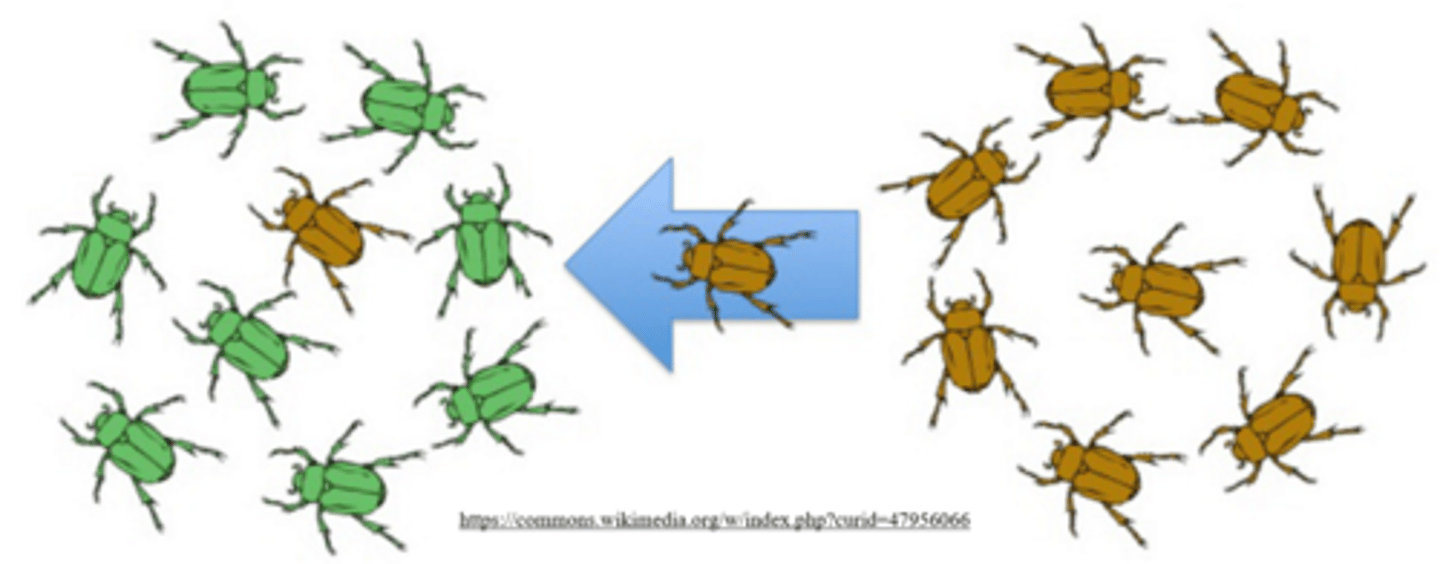
_____ describes allele changes at the species level or higher
macroevolution
genes can change within one generation in _____, but evolution takes time in _____
microevolution; macroevolution
species are individuals that can _____
interbreed
different species are _____ separated (gene pool isolation)
reproductively
what are the two mechanisms for reproductive isolation?
prezygotic and postzygotic
_____ isolation prevents fertilization, even if mating is attempted between two different species
prezygotic
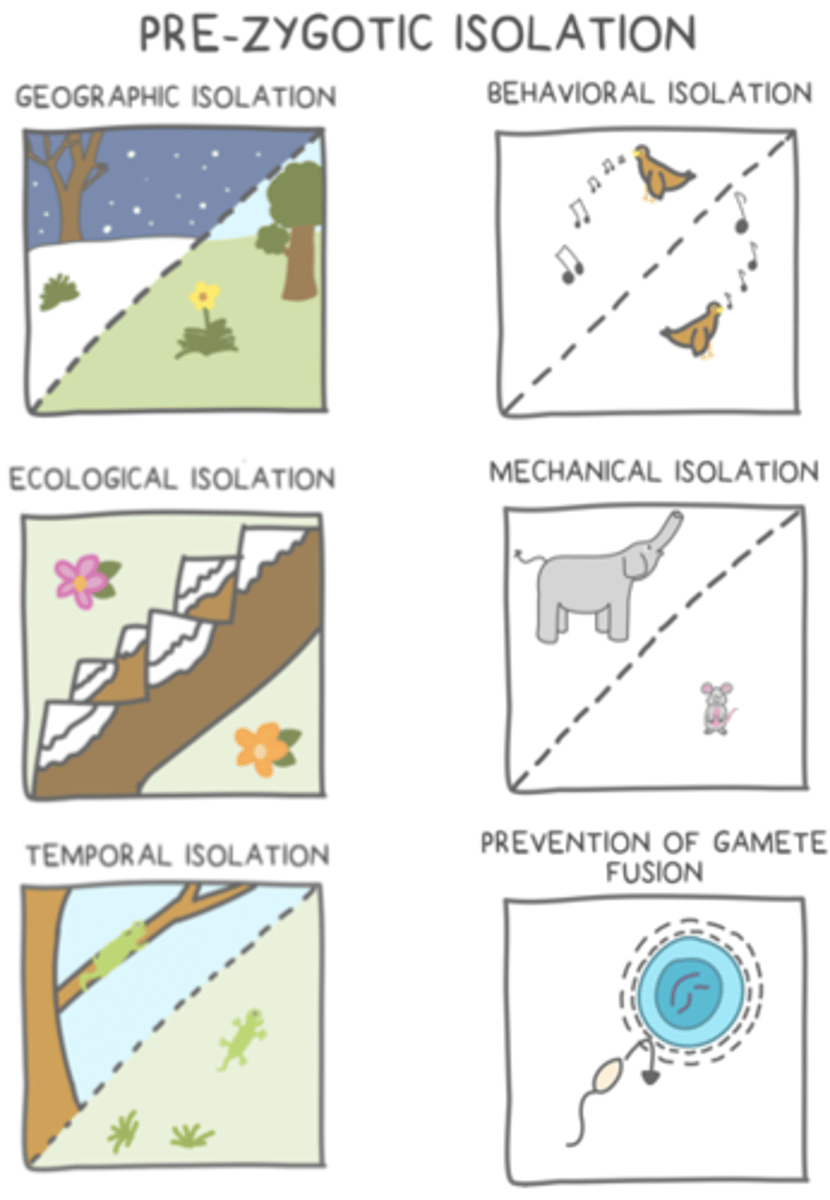
prezygotic isolation prevents the formation of a _____
zygote

what are the five main types of prezygotic isolation?
habitat, temporal, behavioral, mechanical, and gamete

describe the process of habitat isolation:
mating is hindered between two species that occupy different habitats
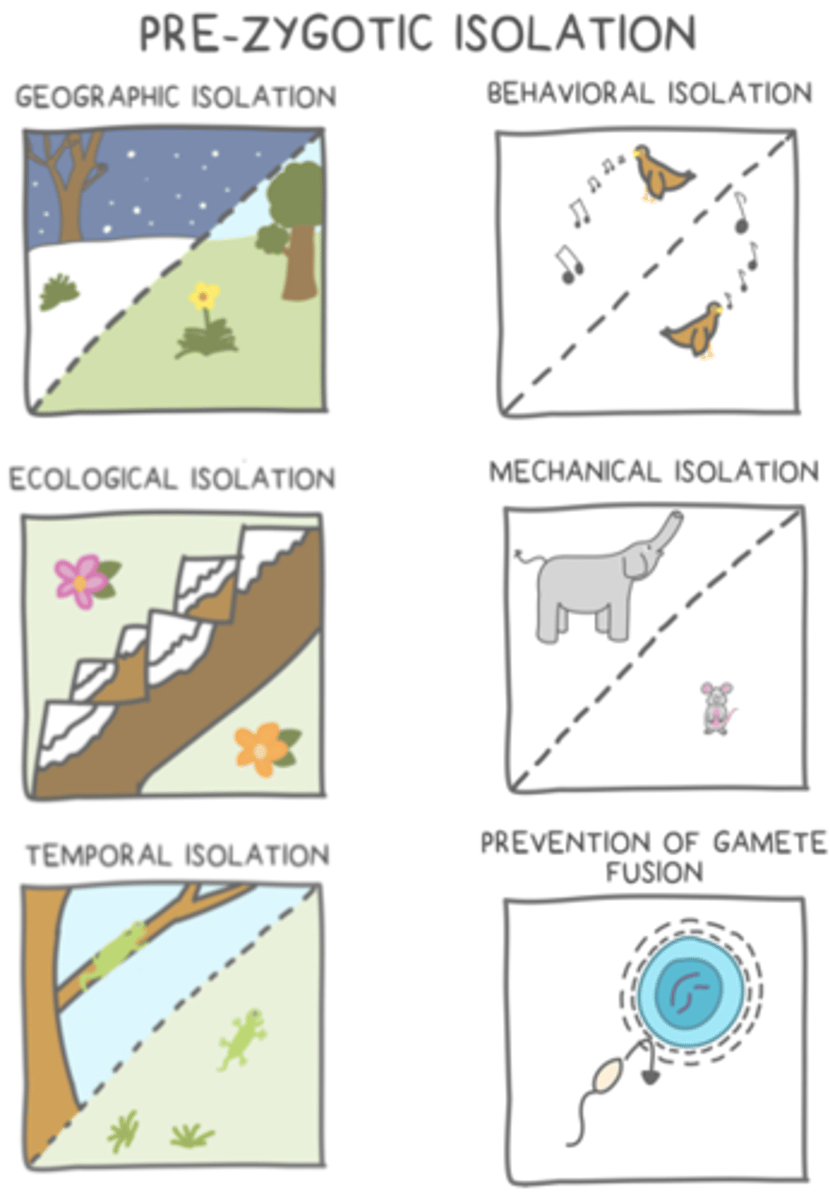
_____ is a prezygotic isolation mechanism where two species breed and reproduce at different times/seasons
temporal isolation

behavioral isolation is prezygotic isolation mechanism where two species do not _____ for each other
perform the correct courtship rituals
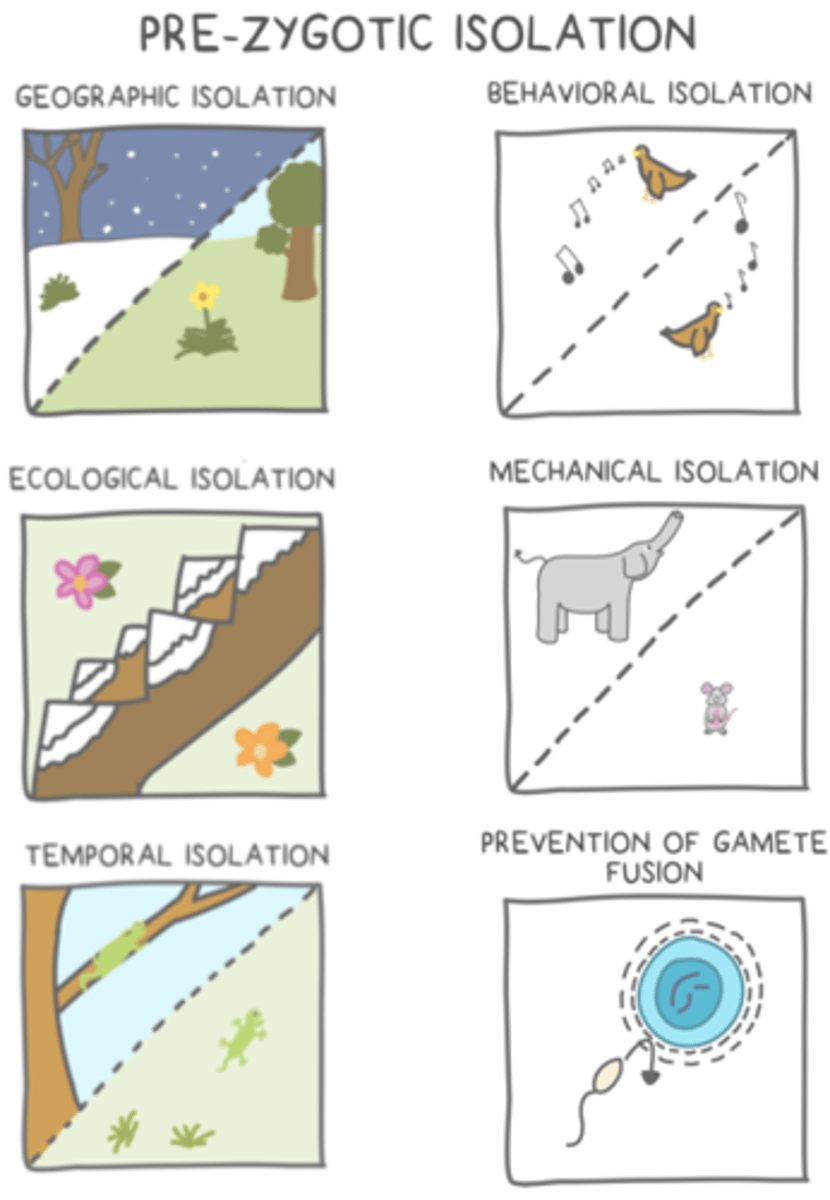
mechanical isolation is a prezygotic isolation mechanism where _____ between different species
male and female genitalia are not compatible
